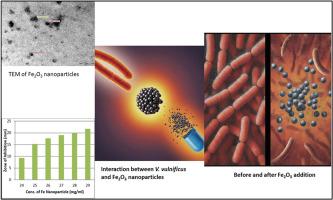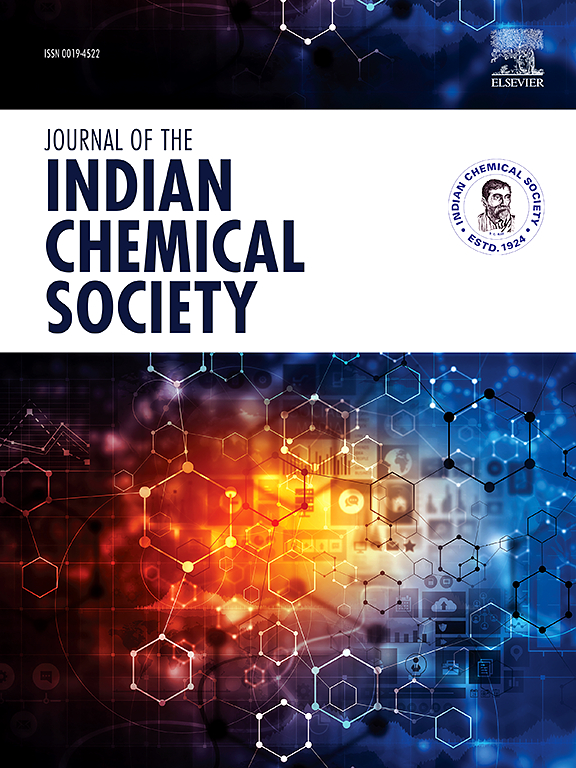Evaluation of antibacterial efficacy of iron oxide nanoparticles against Vibrio vulnificus: A comparative study with standard antibiotics
IF 3.2
4区 化学
Q2 CHEMISTRY, MULTIDISCIPLINARY
引用次数: 0
Abstract
The synthesis and utilization of Fe2O3 nanoparticles are increasing due to their low cost, environmentally friendly, and biocompatible nature. Antimicrobial resistance is noticed as a global health concern by the community. Multidrug therapy and improper treatment of any disease cause an exponential increase in resistant microbial species. Therefore, improving the treatment schemes for curing different types of contagious ailments caused by microbes is essential. An economical co-precipitation technique was utilized for the preparation of Fe2O3 nanoparticles. The Fe2O3 nanostructures were analyzed by FTIR, ultraviolet–visible spectroscopy, XRD, and TEM techniques. The Fe2O3 nanoparticle's dimensions were determined to be 28.72 nm. A toxicity study of these Fe2O3 nanoparticles was carried out against a Gram-negative bacterium Vibrio vulnificus and showed toxic properties towards the Vibrio vulnificus. The antibacterial properties of these Fe2O3 nanoparticles were contrasted with commonly used antibiotics, including chloramphenicol, streptomycin, ampicillin, penicillin, Tetracycline, sulphatriad, Co-Trimoxazole, Clindamycin, Oxacillin, Erythromycin, and Chloramphenicol, etc., and found to be comparable in some cases even better antibacterial activity.

评估氧化铁纳米颗粒对弧菌的抗菌效果:与标准抗生素的比较研究
由于 Fe2O3 纳米粒子成本低、对环境友好且具有生物相容性,因此其合成和利用日益增多。抗菌药耐药性已成为全球社会关注的健康问题。多种药物疗法和任何疾病的不当治疗都会导致抗药性微生物物种呈指数级增长。因此,改进治疗方案以治愈由微生物引起的各种传染性疾病至关重要。我们采用了一种经济的共沉淀技术来制备 Fe2O3 纳米粒子。傅立叶变换红外光谱、紫外可见光谱、XRD 和 TEM 技术对 Fe2O3 纳米结构进行了分析。经测定,Fe2O3 纳米粒子的尺寸为 28.72 纳米。这些 Fe2O3 纳米粒子对革兰氏阴性菌弧菌进行了毒性研究,结果表明对弧菌具有毒性。将这些 Fe2O3 纳米粒子的抗菌特性与常用抗生素(包括氯霉素、链霉素、氨苄西林、青霉素、四环素、磺胺三甲氧嘧啶、共三唑、克林霉素、氧西林、红霉素和氯霉素等)进行了对比,发现它们的抗菌活性相当,在某些情况下甚至更好。
本文章由计算机程序翻译,如有差异,请以英文原文为准。
求助全文
约1分钟内获得全文
求助全文
来源期刊
CiteScore
3.50
自引率
7.70%
发文量
492
审稿时长
3-8 weeks
期刊介绍:
The Journal of the Indian Chemical Society publishes original, fundamental, theorical, experimental research work of highest quality in all areas of chemistry, biochemistry, medicinal chemistry, electrochemistry, agrochemistry, chemical engineering and technology, food chemistry, environmental chemistry, etc.

 求助内容:
求助内容: 应助结果提醒方式:
应助结果提醒方式:


